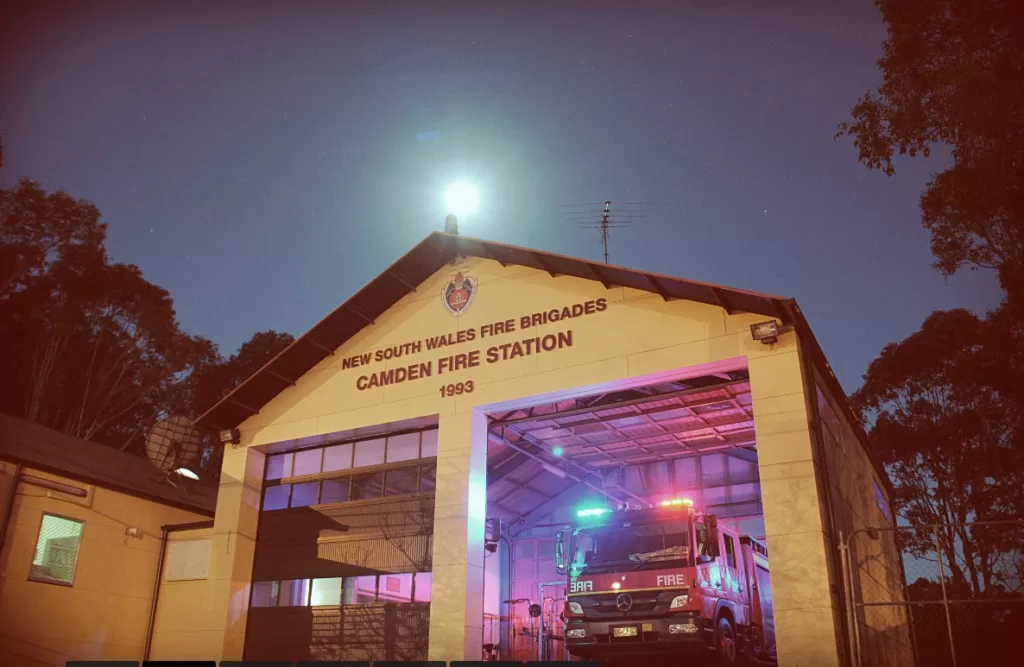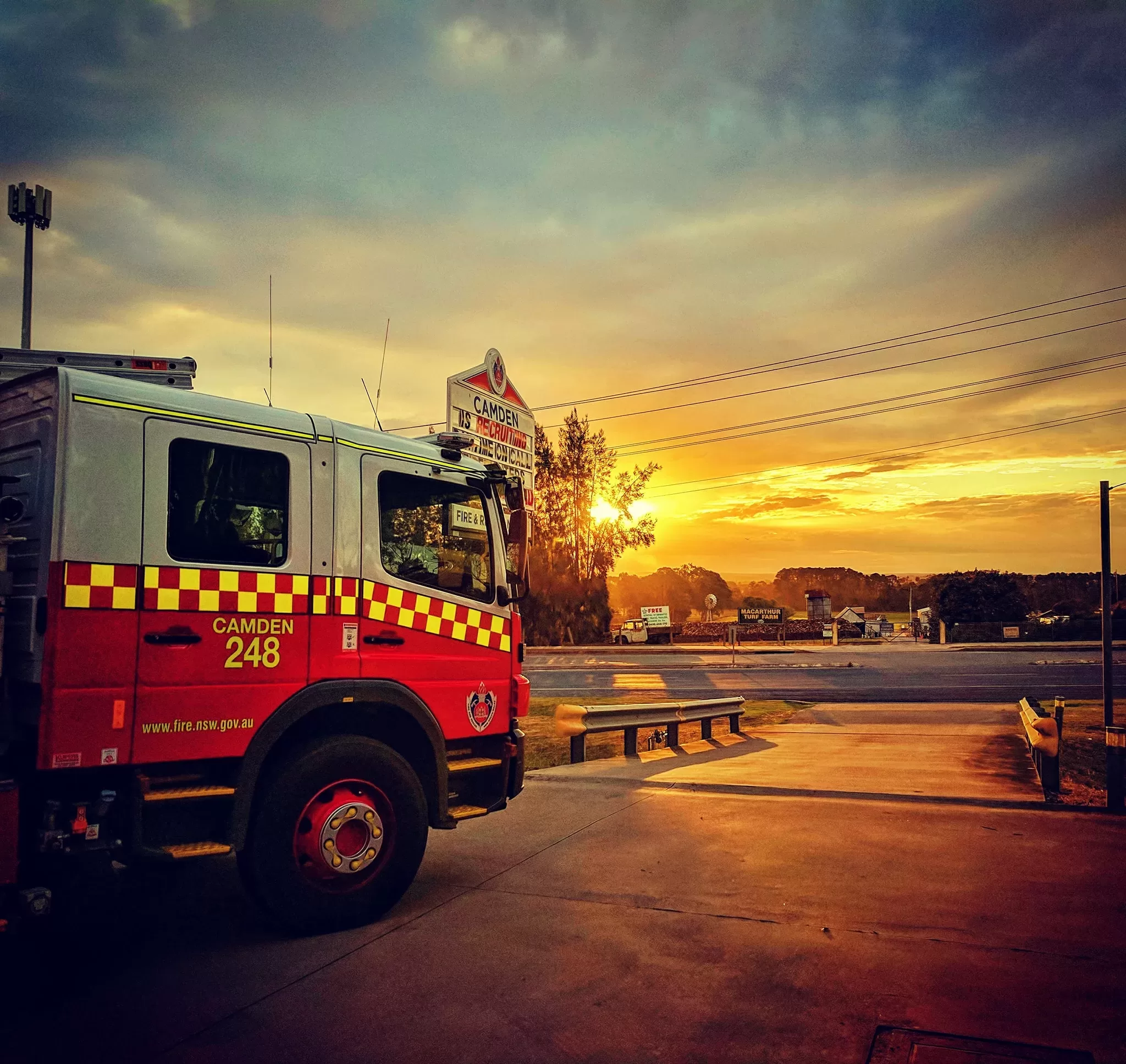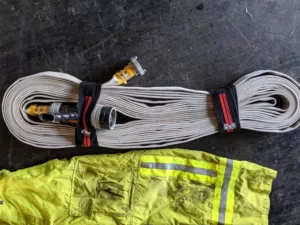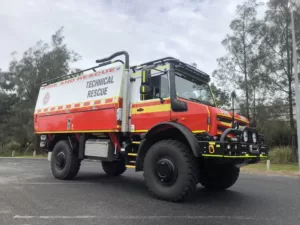Introduction
Are you interested in pursuing a career as a paid firefighter in Australia? From the qualifications required to the application process, we’ve got you. Let’s take a look at the different firefighting roles Australia has to offer.
Overview of Firefighting Roles
Australia’s firefighting sector boasts a wide array of firefighter classifications, catering to diverse needs and challenges. These include career firefighters, part-time firefighters, dedicated volunteers, aviation, private, military, and seasonal firies. In this article, we will focus on the primary firefighting agency for each state that offers paid firefighting positions.
Table of Contents
Fire & Rescue NSW
Fire & Rescue NSW offers two types of paid firefighting roles: permanent and part-time. Permanent firefighters are stationed at a fire station and work shifts, typically 24-hour shifts. Only present at the station when necessary, part-time firefighters are paid on an on-call basis. When dispatched, they respond to calls via a pager they carry or an app on their phone.
Full-time Paid Firefighters
Often called ‘Career’ staff, permanent firefighters are paid a salary and stationed at a particular fire station. Typically following a rotating shift schedule, shifts are usually in 24-hour blocks.
Photo: Permanent Station & Headquarters, City of Sydney Station, 001.

For a new applicant aspiring to become a career firefighter with FRNSW (Fire + Rescue NSW), the journey begins with an online application. After submission, candidates undergo a selection process, including psychometric assessments, video interviews, and supervised verification tests. Those who progress then face a Physical Aptitude Test (PAT) to assess their physical readiness.
Successful candidates proceed to an assessment centre, where they engage in behavioural assessments and group activities. A thorough medical assessment follows to ensure fitness for the physically and psychologically demanding job. Upon successful completion, candidates enter a 14-week recruit training program at the FRNSW Emergency Services Academy.
Education requirements
All permanent (full-time) firefighter candidates must meet certain education requirements. These include having a Higher School Certificate (HSC) or equivalent higher education qualification, a Certificate III in any discipline, a trades-qualified certificate, three years’ service as a retained (on-call) firefighter with FRNSW, or a higher educational qualification.
The Selection Process and Criteria
The selection process for becoming a firefighter with FRNSW is comprehensive and rigorous. It involves online psychometric assessments, video interviews, supervised verification tests, a physical aptitude test (PAT), an assessment centre, employment checks, a medical assessment, and successful graduation from a 14-week recruit training programme. Candidates are evaluated based on cognitive abilities, emotional intelligence, mechanical reasoning, behavioural traits, teamwork skills, and their physical and medical suitability for the role.
Medical and Physical Testing
Candidates undergo a thorough medical assessment to ensure they can perform the physically and psychologically demanding tasks of a firefighter safely. This includes assessing their ability to handle the physical rigours of firefighting, work in hazardous environments, and operate heavy vehicles. Additionally, candidates must pass a Physical Aptitude Test (PAT) to demonstrate their physical fitness and readiness for the role.
The PAT involves a series of tasks and exercises designed to simulate real-world firefighting scenarios. Candidates are required to demonstrate their strength, endurance, agility, and ability to work efficiently under physically challenging conditions. Successful completion of the PAT is a prerequisite for progressing to the next stages of the recruitment process
Types of Shifts and Pay
FRNSW operates various shift rosters, including 24-hour rosters, 10/14 rosters, back-to-back rosters, and special rosters. Firefighters work under these schedules, which include weekends and public holidays. From Recruit Firefighter to Inspector, pay rates range, reflecting the amount of responsibility and experience within the organisation. Pay rates are determined by rank or classification.
Training Duration and Location
Successful candidates undergo a 14-week recruit training program at the FRNSW Emergency Services Academy located at Orchard Hills, Sydney. This program combines practical and theoretical instruction, covering areas such as safety, structural firefighting, hazardous material incidents, and rescue techniques. Candidates graduate as Level 1 Firefighters with nationally recognized qualifications.
More information for Fire & Rescue NSW can be found here.
If you’re interested in volunteering in NSW instead, check out the NSW Rural Fire Service
On-call Paid Firefighters
On-call firefighters are required to reside or have employment in close proximity to the fire station, and have availability to attend incidents while rostered ‘on call’. They are responsible for attending calls on an individual basis rather than being present at the station for designated shifts. For every event they attend, such as incidents, training sessions, community education programmes, and other relevant activities, on-call firefighters are paid for their time.
Photo: On-call station 248 Camden, Sydney NSW.

The process for a new candidate aspiring to become an on-call paid firefighter with Fire + Rescue NSW involves several steps. It begins with checking if you live near or work in an on-call station location and submitting an online application that includes personal details and work history. Successful applicants proceed to an interview as vacancies arise, where a selection panel assesses their capabilities and essential requirements. Employment checks, including reference checks, follow the interview.
Candidates then undergo a comprehensive medical assessment to ensure their physical and psychological suitability for the role. Passing a Physical Aptitude Test (PAT) is a prerequisite for all candidates. Those who meet the criteria may be placed in a talent pool for future consideration, and eventually, successful candidates receive offers of employment, contingent on a satisfactory criminal history check.
Minimum Requirements
Candidates are expected to meet the essential requirements, which include Australian citizenship or permanent residency, proximity to an on-call fire station, a minimum NSW Provisional P1 driver’s license, and the ability to pass a physical aptitude test.
The Selection Process and Criteria
The selection process for on-call firefighters with Fire + Rescue NSW involves several stages. Candidates begin by applying online and, if they meet essential requirements, proceed to interviews and employment checks. The merit-based interview assesses candidates’ capabilities and essential requirements. Successful candidates undergo a comprehensive medical assessment to ensure they can meet the physical and psychological demands of the role. Additionally, they must pass a Physical Aptitude Test (PAT) to evaluate their physical fitness. Candidates who meet all criteria and pass each stage of the selection process may receive an offer of employment.
Medical and Physical Testing
A medical assessment is conducted to ensure candidates can perform essential tasks safely and without significantly increasing their personal risk of injury or illness. This assessment includes a GP examination, blood and urine tests, ECG, audiology, spirometry, and submission of supporting medical documentation for past health conditions or surgeries. Candidates are also required to pass a Physical Aptitude Test (PAT) that assesses their physical fitness and readiness for the demands of the firefighting role.
Comprising three stages with specific tasks, the PAT assesses candidates’ capabilities in scenarios that simulate the demanding aspects of firefighting, such as reduced visibility searches, ladder simulations, carrying heavy loads, stair climbing, handling rescue tools, and hose dragging. Candidates must demonstrate strength, endurance, agility, and the ability to perform firefighting tasks safely and effectively.
Types of Shifts and Pay
On-call firefighters with Fire + Rescue NSW respond to emergencies 24/7, but they are not rostered on duty. They declare their availability to respond a week in advance, allowing them to maintain other employment or commitments. They are paid a retainer in recognition of their availability, and additional pay is provided for attendance at incidents and drills. Hourly rates vary based on rank/classification. New recruits start as “On-call Recruit Firefighters” at the base level retainer. The pay structure is governed by the Crown Employees (Fire and Rescue NSW Retained Firefighting Staff) Award 2021.
Training Duration and Location
Initial training for on-call firefighters is structured over two phases with online pre-course requirements and ‘at station’ pre-course training. The online pre-course includes approximately 35.5 hours of work, while the ‘at station’ pre-course requires up to 6 hours of attendance at the fire station. Face-to-face training options include either two block sessions of four days each or a combined eight-day version. The training covers firefighting foundation skills and competencies under Certificate II in the Public Safety Training Package.
Ongoing training and skills maintenance are essential, and firefighters are expected to participate in regular training drills on a fortnightly basis either at their station or with other crews within the district. Additionally, firefighters must attend an annual fitness drill to maintain their readiness.
For more information on On-Call Paid Firefighters with FRNSW, see this page.
Frequently Asked Questions
Do firefighters get paid well in Australia?
The exact salary can vary depending on factors such as experience, location, and rank within the firefighting organization. However, firefighters in Australia typically earn a competitive salary that reflects the importance and risks associated with their job.
How much do full-time paid firefighters get paid in NSW?
Rates of pay vary based on the rank or classification of the position. These figures are for 2022, not including superannuation.
Recruit Firefighter: $1,304.71 per week.
Firefighter: $1,505.43 per week.
Qualified Firefighter: $1,672.70 per week.
Senior Firefighter: $1,773.06 per week.
Leading Firefighter: $1,873.42 per week.
Station Officer: $2,124.33 per week.
Leading Station Officer: $2,174.52 per week.
Inspector: $2,509.05 per week.How much do on-call paid firefighters get paid in NSW?
On-call firefighters are paid through a structured payment system that includes a base retainer and various hourly rates based on their rank or classification within Fire + Rescue NSW. In addition to the rates below, on-call firefighters also receive an ‘On-call Telephone Alerting and Availability System Allowance’ to compensate for their availability and responsiveness.
On-call Recruit Firefighter:
Base Retainer per fortnight: $73.77
Hourly Rate for incidents and drills: $31.23On-call Firefighter:
Base Retainer per fortnight: $73.77
Hourly Rate for incidents and drills: $35.14




